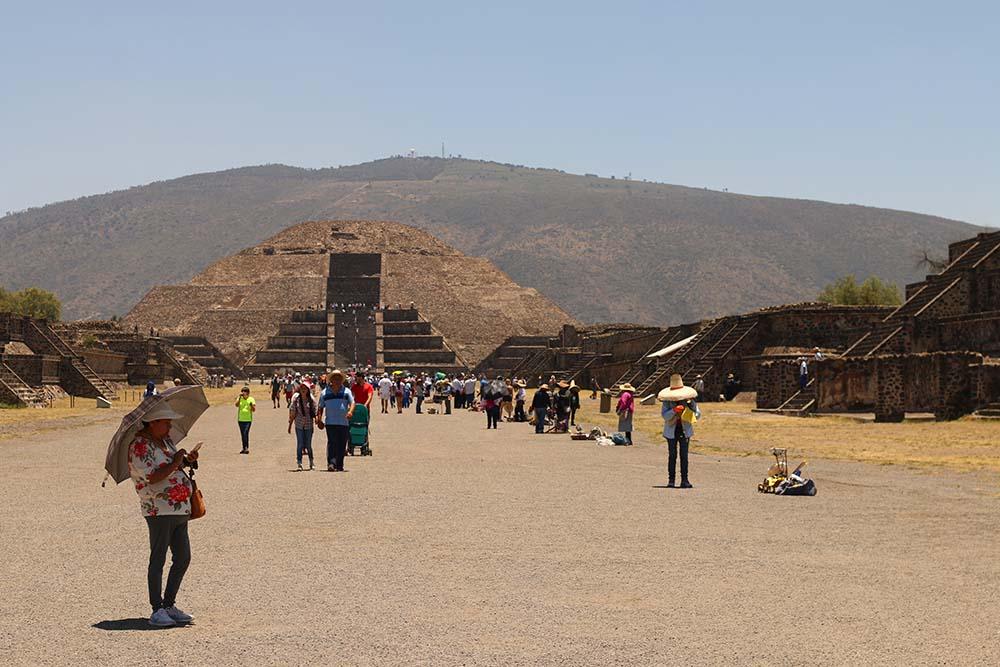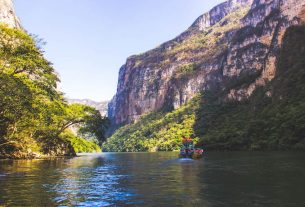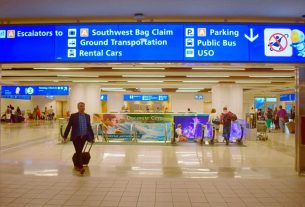It may be a lot, but it may also be less than you would imagine. And this with a relatively comfortable trip in mind, with several restaurants and bars on the itinerary. I spent 16 days in Mexico, in June 2017. In this text you will find the budget for my trip, which included Mexico City, Puebla, San Cristóbal de las Casas, Playa del Carmém, Akumal and Chichén Itzá. Of course, answering how much it costs to travel to Mexico is no simple task. This depends on your travel style, your choices, itinerary and even the time of year you are going to hit the road. Despite the reservations, I think you can get an idea based on my spending there.
Before breaking down, real by real, my expenses in Mexico, let’s focus on two important questions involving money?
See too: Mexican food and typical dishes from the country
Four days of tourism in Mexico City
Cancún, Playa del Carmen and Riviera Maya: how to plan your trip
And see all the texts we have already published about Mexico
What currency to take to Mexico? Dollars or pesos?
I even got a quote for Mexican pesos at an exchange office in Brazil, but it soon became clear that it wasn’t worth buying Mexico’s currency on green and yellow soil. As it is not a widely traded currency here, its exchange rate is not good for travelers. Therefore, it is better to buy dollars in Brazil and exchange them for pesos when you arrive in Mexico. The economy almost reached 20%.
Chichen itza
How much to take and where to exchange?
I took around 400 dollars in cash, which was more or less R$ 1300. The idea was to concentrate everyday expenses on this amount, for a 16-day trip. Larger expenses, such as accommodation and internal tickets, would be on credit cards. It was little, so much so that we had to withdraw another 200 dollars towards the end of the trip – and even so, we ran out of cash in the last few days.
The problem is that it’s not always possible to pay larger bills with a card, even in very touristy places. In the Cancún region, for example, we didn’t find gas stations that accepted cards, so we had to pay with cash. Furthermore, almost all cenotes, geological formations typical of this part of Mexico and which charge up to 90 dollars for entry, did not accept cards. We also had this problem with a hotel, which only accepted payment in cash. Therefore, if one day I return to Mexico, I would take a slightly larger amount of dollars. It is also worth noting that the value stated was just for me – if I travel with a partner, the value in kind increases according to the number of travelers.
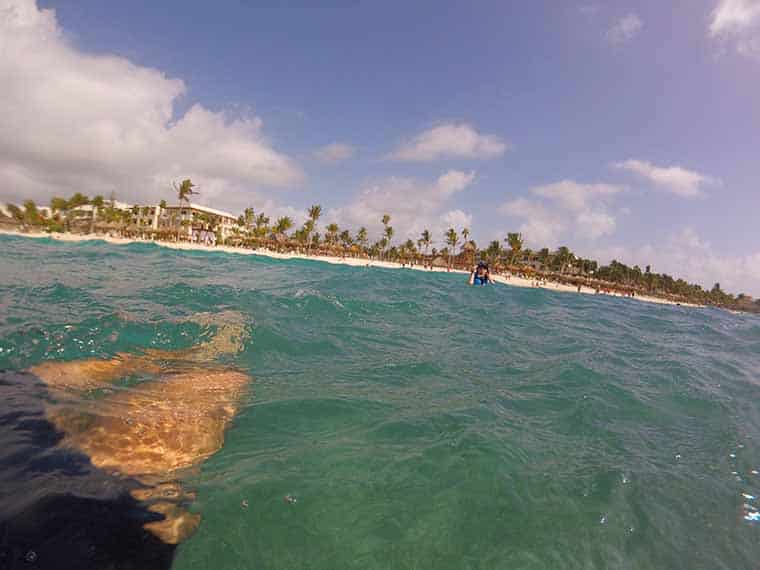
Cumulative
Upon arrival in Mexico City, exchange your dollars at the airport’s exchange offices. Contrary to common sense, the best rates we found in the country were in airport stores, especially those that are not very close to the entrance/exit – look for exchange offices on the upper floors. There are stores in the city center, but they usually do not open on holidays and weekends. In addition to offering, in my experience, a slightly worse quote.
It is common for hotels and restaurants to accept payments in dollars, returning change in pesos. If you choose to do this, ask in advance what price the establishment offers that day. Sometimes it can be a good deal, but in most situations it is not
Ticket to Mexico
Ok, here’s a part of the budget that won’t always be the same. I paid R$705, with taxes, to fly from Porto Alegre and with a connection in São Paulo, to Mexico City. The flights were with Aeroméxico, but LATAM also operates this route.
I know this is not the standard price, but I’ve seen this same promotion occur again, both in Porto Alegre and Rio de Janeiro. For Mexico, anything equal to or below a thousand reais is fantastic – we’re talking about a flight lasting almost nine hours. Tickets for up to R$1500, considering departures from São Paulo, are also at very good prices, and even flights for around R$2000 are not expensive, although they are not promotional.
It’s worth remembering, to get really good prices you need to plan and guarantee flights months in advance. Leave it until the last minute and the value tends to triple.
Spending on tickets to Mexico: R$705 (it is very likely that your expense will be higher).
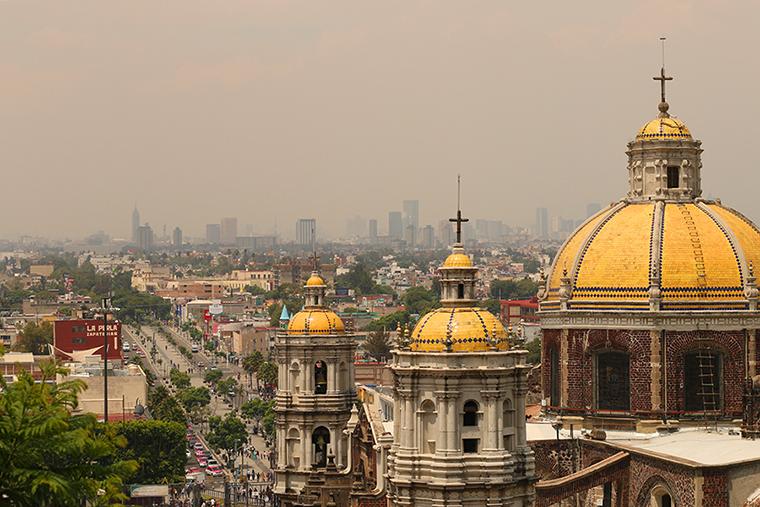
Mexico City
Travel insurance
It is not mandatory to have travel insurance to go to Mexico, but I strongly recommend that you take out one – it is a low expense and can save you in an emergency. I paid R$136 for one with good coverage. In this text we explain how to guarantee insurance with the best cost/benefit.
Insurance expenses: R$ 136.
Internal passages
You can stay in just one region and you can spend all your days around Cancún or Mexico City, for example. But, if you wanted to take a wider itinerary around the country, there’s no way – be prepared to spend money on internal travel. Mexico is one of the largest countries in the world, so distances can be large. From Mexico City to Cancún, for example, it is almost 1700 km.
We took three flights within Mexico, with three different airlines: Viva Aerobus, Volaris and Interjet. The one-way ticket from Mexico City to Tuxtla Gutiérrez, a neighboring city of San Cristóbal de Las Casas, cost R$394. This route was more expensive because it was purchased at the last minute, when the trip had already started. The ticket from Tuxtla to Cancún cost R$ 163, while the ticket from Cancún to Mexico City cost R$ 219. Before you ask me, the country’s airlines allow baggage check-in at no additional cost, respecting defined limits at the time of purchase.
In addition, there was a bus trip, back and forth, between Mexico City and Puebla. The total expense was R$154. In fact, going by bus to other cities is a way to save money, if you have time for it and don’t insist on flying.
Urban travel, whether by taxi, Uber or public transport, is in a topic below.
Spending on internal tickets: R$ 394 + R$ 163 + R$ 219 + R$ 154 = R$ 930.
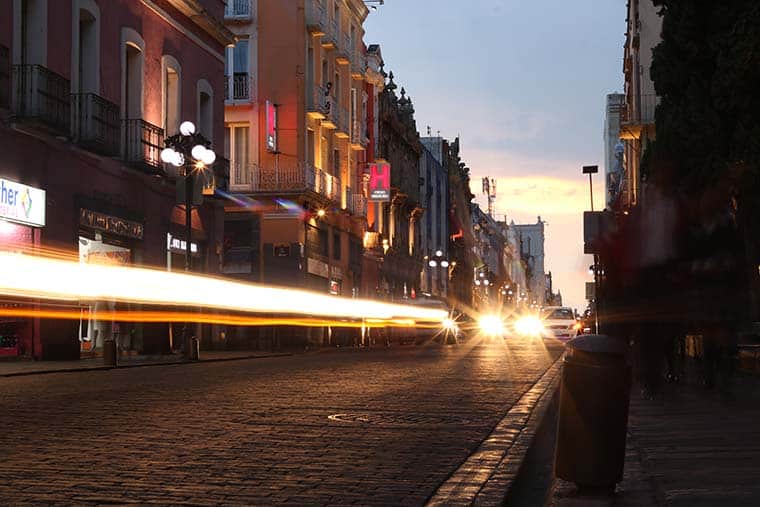
Puebla
accommodation
We booked 15 nights in Mexico, in seven different hotels. Hotels in Mexico City and Cancún/Riveira Maya are much more expensive than in the rest of the country. We only stay in private rooms, always in inns or three-star hotels, all highly rated on Booking. Three of the nights were at a full-board establishment in Playa del Carmén. The total cost of accommodation was R$4055, but that was for two people. The expenditure per person was R$2027, or R$135 per day.
You could spend a lot less. The hotel with full board alone, in Playa del Carmen, cost R$1600 (R$800 per person). Backpackers can stay in shared hostel rooms, something we didn’t want to do. On the other hand, those who travel alone and insist on staying in hotels will spend more, as they will not share the cost of a double room.
When calculating your expenses, be aware that in general Booking reservations in Mexico do not include 19% taxes. Furthermore, simulate the price in Mexican pesos, after all the price changes. And remember that card payments involve an additional 6.38% IOF. The expenses I listed here already include all of this – Mexican government fees and the Brazilian IOF, when we choose to pay by card.
Total spending on accommodation: R$2027 with accommodation, or R$135 per day.
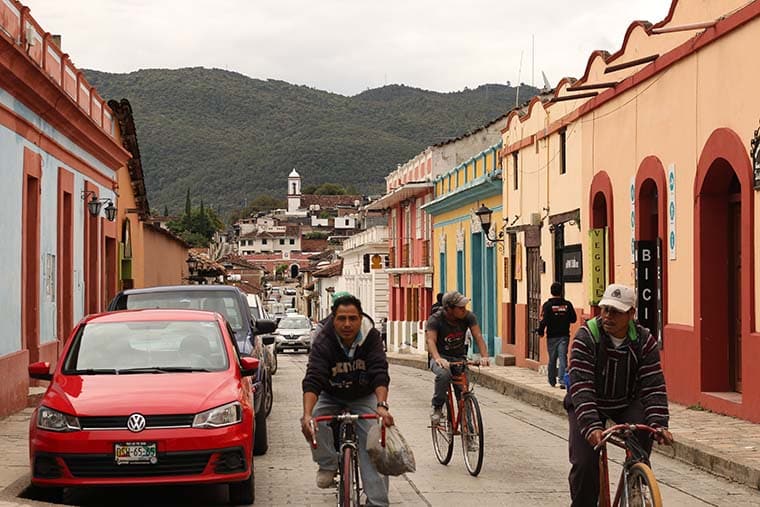
San Cristóbal de las Casas
Food (bars and restaurants)
It’s very cheap to eat well in Mexico. Although prices vary depending on the region and restaurant (expect to spend more in Cancún and the Riviera Maya), you can generally eat well for between R$20 and R$40, including food and drinks. With two meals a day, an average of R$30 per meal, my food expenditure was around R$900. This, I repeat, could have been less. It was our choice that restaurants and bars would be the central focus of the trip.
Food expenses: R$ 900
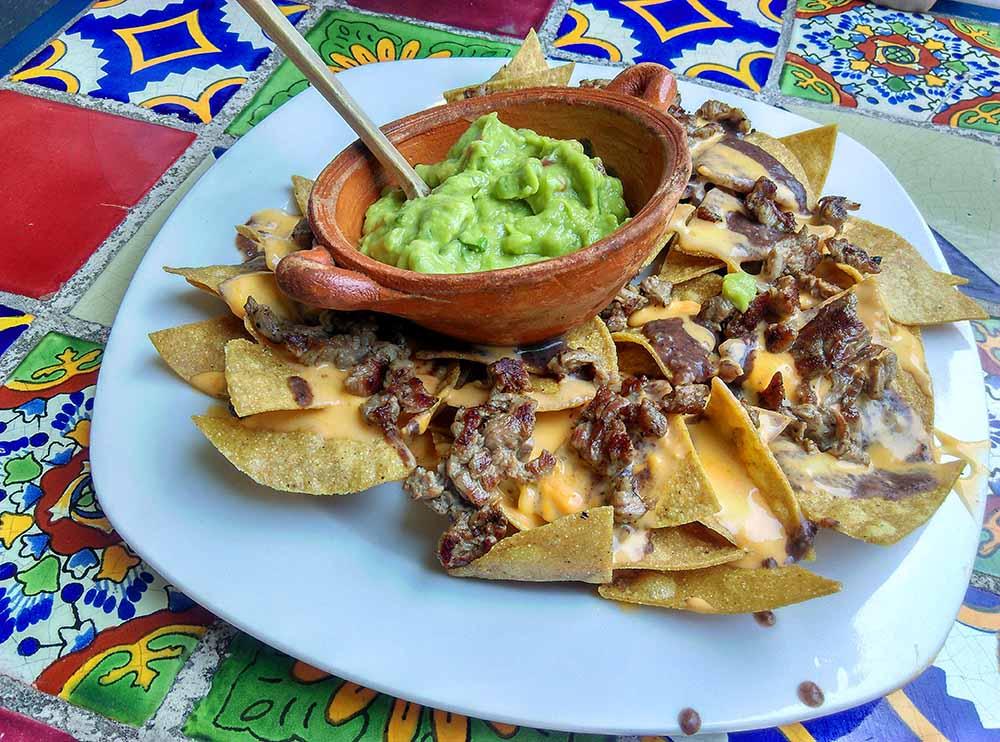
Transport
The subway in Mexico City costs just five pesos, the equivalent of R$1. In cities in the interior, such as Puebla and San Cris, you can do a lot on foot. And there are transportation apps, like Uber and Cabify, in various parts of Mexico. In addition to a small amount on the subway, we spent R$480 on Uber during the 16 days in Mexico, or R$240 per person.
There were 18 runs using the app, including four trips to Mexico City airport and two long round trips to Teotihuacan, pre-Columbian ruins that are 50 km from the capital. We also use the app to go to bars and restaurants, to get to and from bus stations and even when traveling between Puebla and Cholula, cities that are 15 km from each other. Using transport apps is the same as what you would do in Brazil. Just open and call the car. The amount will appear in pesos and will be converted into reais by your card, with IOF charged. The total amount of expenses I reported already includes Brazilian tax.
In addition, we rented a car in Playa de Carmen for three days. The vehicle was useful for getting to know the surroundings and even for a day trip to Chichen Itza, which is 200 km from the Riviera Maya. The daily cost of the vehicle was R$393, plus R$200 for gasoline, amounts that were also shared by two people.
There were also expenses for taxis/vans in Cancún, where the service is expensive, and San Cristóbal de las Casas, in this case to go and return to the airport, which is 80 km from the city. These expenses were R$160 per person. The rest were short journeys and did not add up to 100 pesos (or R$20) per person.
Total spending on urban transport, including car rental and gasoline: R$690 per person.
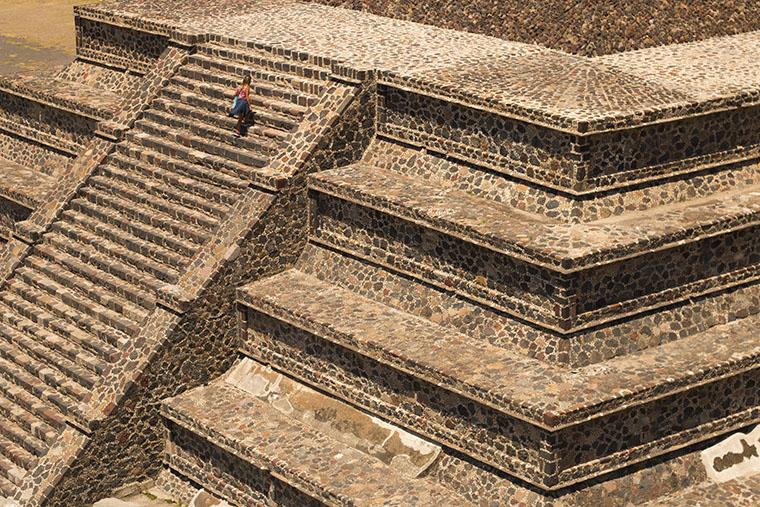
Lazer
This is where the tours come in: museums, visits to pre-Columbian ruins, a night of wrestling, cenotes in the Riviera Maya, renting snorkeling equipment in Akumal – and so on. In general, the cost of this type of program was not high. Entrance to the Anthropology Museum, for example, cost 70 pesos (about R$14). Entrance to the ruins of Chichén Itzá cost the equivalent of R$50, while Lucha Livre cost around R$30. The Casa Museu Frida Kahlo charged the equivalent of R$44 for entry. These are just examples – we were in other museums and took other tours during our trip.
As we did all the tours on our own, without agencies, much of the expense that should have been spent here ended up incorporated into urban travel costs – car rental in Playa del Carmen or Uber trips to the ruins, for example.
Total expenditure on tours: R$ 250.
Shopping
A skull-shaped pillow, a t-shirt and a Mayan mask. That’s basically what I brought from Mexico, expenses that didn’t reach R$100. Add the amount you want here, if you intend to take travel souvenirs.
Total spending on purchases: R$ 100.
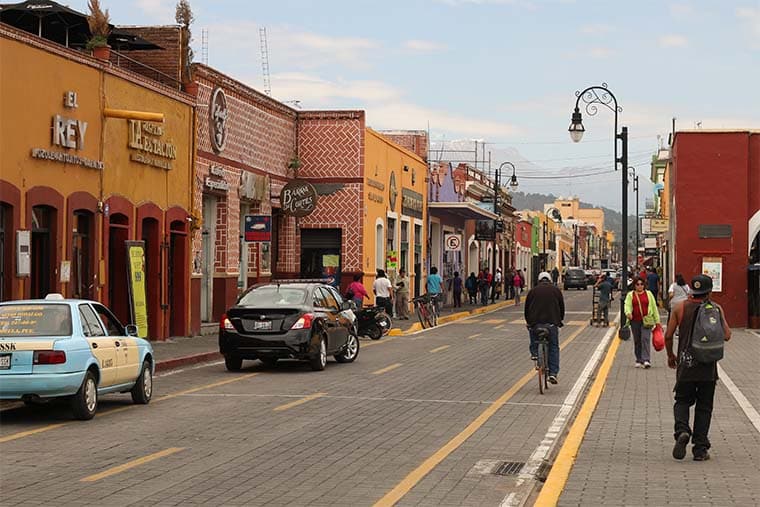
Cholula
How much does it cost to travel to Mexico: my total expense
The total cost of the 16-day trip through Mexico was R$5,738 per person. As you noticed in the text, the expense could have been much less. All that was needed was a bigger saving on accommodation, for example – it was possible to spend less if we stayed in hostels or apartments, especially in Mexico City. Spending could also have been less on food and urban transport – just not renting a car in Cancún or not taking Uber as much. Even travel between cities could have cost less.
On the other hand, we could have also spent a lot more, especially on the plane ticket to Mexico, which was very, very cheap. And spending on purchases was practically irrelevant. As said before, how much you will spend depends on your choices, planning and your travel style.
Sign up for our newsletter

Sign up for our newsletter and stay up to date with exclusive news
that can transform your routine!
Warning: Undefined array key "title" in /home/storelat/public_html/wp-content/plugins/link-whisper-premium/templates/frontend/related-posts.php on line 12
Warning: Undefined array key "title_tag" in /home/storelat/public_html/wp-content/plugins/link-whisper-premium/templates/frontend/related-posts.php on line 13

